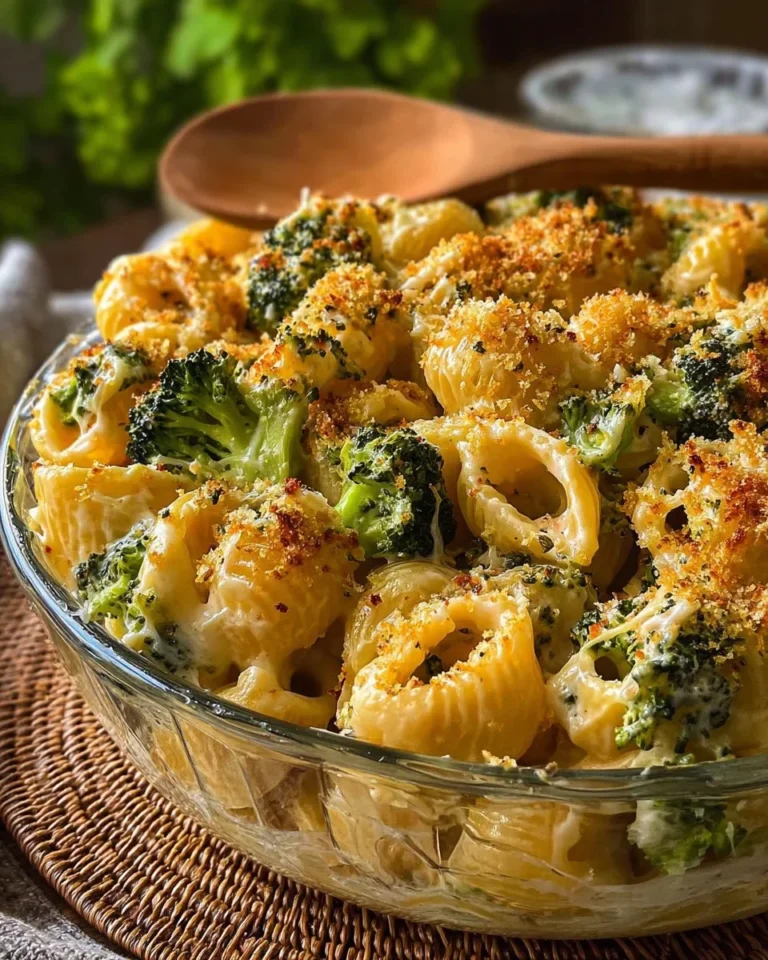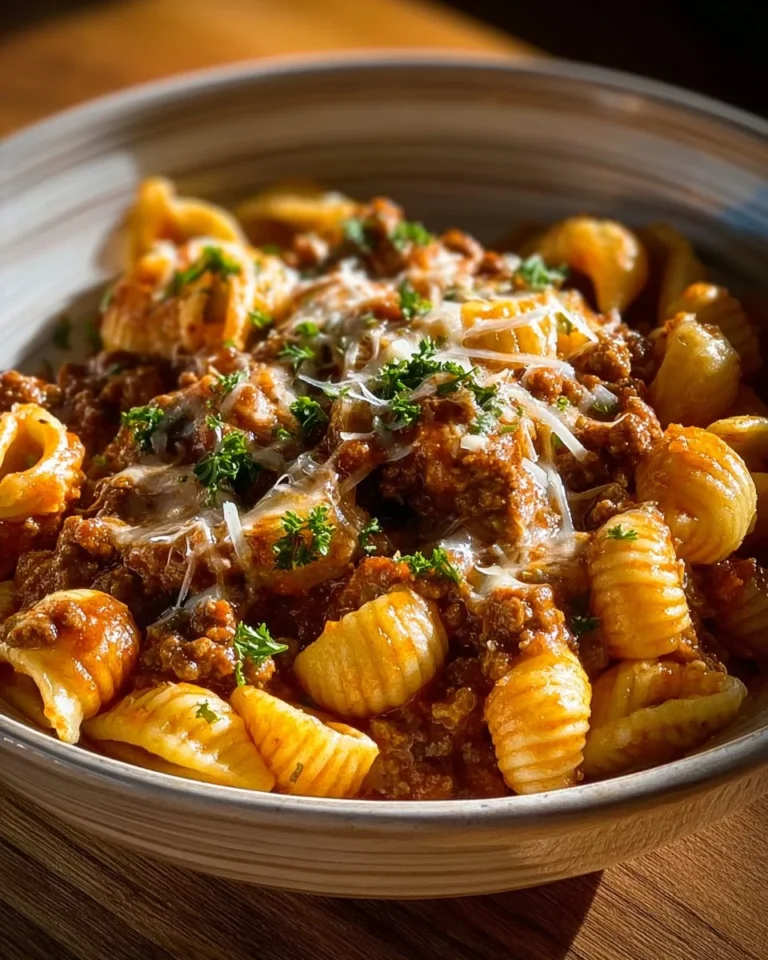Ever stared into your fridge at the end of a long day, hoping for a tasty idea? You’re not alone. Many of us have been there, dreaming of a simple yet satisfying dish. Soy sauce noodles are just that, a comfort food that’s easy to make and full of flavor.
These fried noodles are more than just a quick meal. They’re a chance to get creative in the kitchen. With just a few ingredients, you can make something truly special.

Table of Contents
Key Takeaways
- Soy sauce noodles are quick and easy to prepare, perfect for busy evenings.
- This dish offers a savory flavor that enhances your meal experience.
- Fried noodles are versatile, making them suitable for various occasions.
- Simple ingredients make it an accessible dish for everyone.
- Great as a main dish or a side option alongside favorites.
Introduction to Soy Sauce Noodles
Soy sauce noodles, also known as pan fried noodles, have won hearts in Asia for ages. They started on the lively streets of Asian cities, where food stalls made them a hit. These dishes are loved for their simplicity, appealing to both new cooks and experts.
At their heart, soy sauce noodles mix great taste with ease. They’re quick to make, ideal for when you’re short on time. The soy sauce flavor, combined with fresh veggies and proteins, makes them both tasty and healthy.
Many love soy sauce noodles for their quick, satisfying meals. These noodles fit into many Asian recipes, pleasing different tastes and diets. They’re perfect for any meal, from a filling dinner to a tasty lunch.
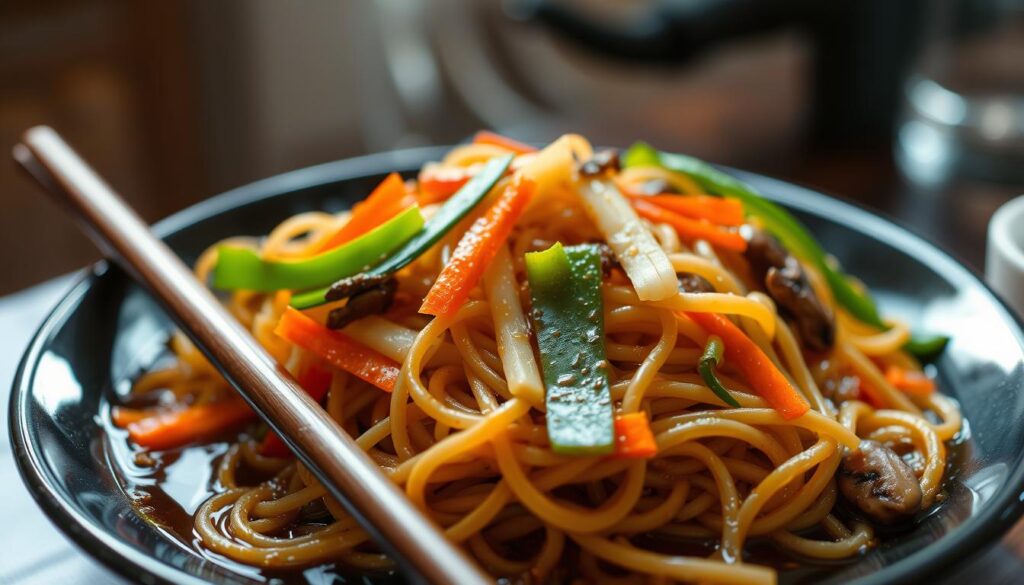
Why Choose Soy Sauce Noodles for Quick Meals?
Weekdays can be busy, and quick soy sauce meals are a great solution. Soy sauce noodles are ready in about 15 minutes. They’re perfect for when you need a fast, filling meal.
These noodles are easy to make and don’t require advanced cooking skills. You can make them quickly, saving you time.
Soy sauce noodles are also very versatile. You can add your favorite ingredients, like leftover chicken or fresh veggies. This way, you can make a tasty meal without wasting food. It’s a smart way to enjoy a meal without ordering takeout.
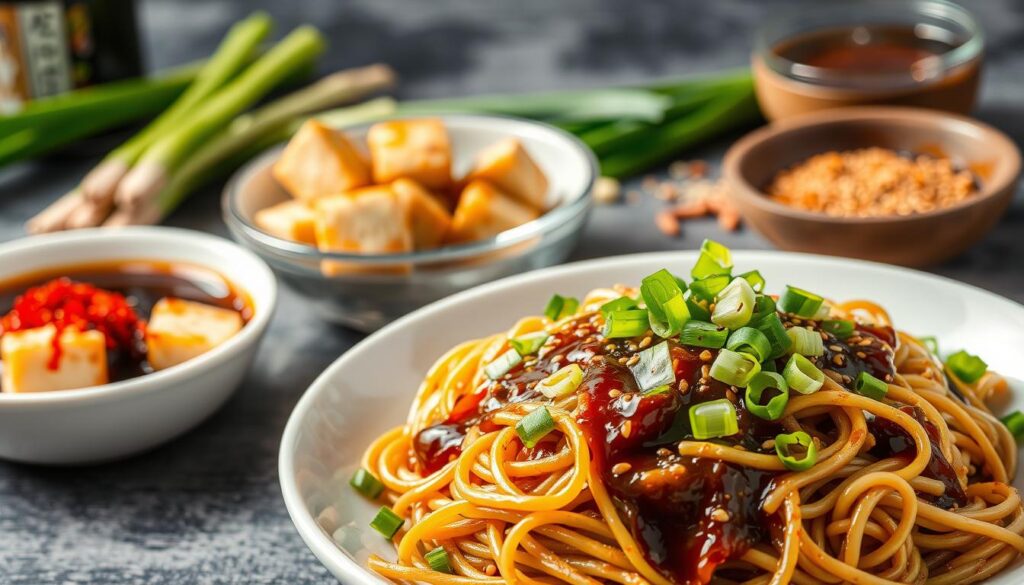
| Meal Feature | Soy Sauce Noodles |
|---|---|
| Preparation Time | 15 minutes |
| Customization Options | High (meat, veggies) |
| Ease of Cooking | Very easy |
| Ideal for | Busy lifestyles |
| Food Waste Minimization | Yes |
Choosing soy sauce noodles means you get a meal that’s quick and easy to make. With just a few ingredients, you can have a delicious dish that fits your schedule and tastes.
Essential Ingredients for Soy Sauce Noodles
Great soy sauce noodles start with the right ingredients. Use fresh chow mein noodles, or try yakisoba, udon, or spaghetti. The type of noodle changes the dish’s texture and taste.
For the best noodle sauce, pick the right soy sauces. Light soy sauce adds a nice saltiness. Dark soy sauce brings richness and color, making the dish more flavorful. Adding oyster sauce can make the umami even stronger, blending well with the soy sauces.
Here’s a quick overview of the essential ingredients:
| Ingredient | Purpose |
|---|---|
| Chow Mein Noodles | Main ingredient; provides the base texture |
| Light Soy Sauce | Seasoning; enhances flavor without over-salting |
| Dark Soy Sauce | Adds richness and color for depth |
| Oyster Sauce (optional) | Boosts umami and overall flavor |
How to Prepare Soy Sauce Noodles
Preparing soy sauce noodles is easy and adds flavor to your meal. Start by getting all your ingredients ready. This recipe involves blanching fresh noodles in boiling water for a few minutes until they’re tender.
While the noodles cook, mix your sauces in a bowl. You’ll need soy sauce, sesame oil, and a bit of sugar. Once the noodles are done, drain them and set them aside. Then, sauté chopped onions and minced garlic in a hot skillet until they smell great.
Add the blanched noodles and sauce mixture to the skillet. Stir-fry for 3-5 minutes, making sure the noodles are well coated. You can also toss in veggies like bell peppers, carrots, or snap peas for extra flavor.
Finish by sprinkling sesame seeds or chopped green onions on top. This not only makes the meal quick but also brings out the flavors of soy sauce noodles.
| Step | Action |
|---|---|
| 1 | Gather ingredients and equipment. |
| 2 | Blanch fresh noodles in boiling water. |
| 3 | Mix sauce ingredients in a bowl. |
| 4 | Sauté onion and garlic in a skillet. |
| 5 | Add noodles and sauce mixture to the skillet. |
| 6 | Stir-fry until well combined. |
| 7 | Garnish and serve hot. |
Cooking Techniques for Perfect Fried Noodles
To get the perfect fried noodles, you need the right cooking techniques. Start by briefly blanching your noodles in boiling water. This step prevents them from becoming sticky and helps them get that golden crispiness.
After blanching, focus on stir-frying. Use oils like vegetable or peanut oil, which have high smoke points. High heat is key to quick cooking and better flavor. Make sure to stir-fry just enough to keep the noodles crunchy without overcooking.
To make your dish even better, aim for wok hei. This is the charred aroma and flavor you get from high-heat cooking in a seasoned wok. A few tweaks can make a big difference. Add sauces at the right time to avoid soggy noodles and ensure they’re evenly coated.
| Cooking Technique | Description | Benefits |
|---|---|---|
| Blanching | Brief cooking in boiling water before frying | Prevents stickiness and aids in achieving a crisp texture |
| High-heat Stir-frying | Cooking quickly at high temperatures | Retains crunchiness; enhances flavors |
| Wok Hei | Aim for that signature charred flavor | Adds depth and aroma to the dish |
Customizing Your Soy Sauce Noodles
Soy sauce noodles are super versatile. You can add shrimp, chicken, or tofu to make them more interesting. These proteins not only add flavor but also make your noodles more satisfying.
Adding veggies like carrots, bell peppers, and greens can make your dish pop. They add color and a nice crunch that goes well with the noodles.
Flavor is key to making your noodles stand out. Try using sesame oil for a nutty taste or chili flakes for a spicy kick. Sauteed garlic can also add a wonderful aroma.
Here is a simple table showing ways to customize your soy sauce noodles:
| Protein Options | Vegetable Options | Flavor Enhancers |
|---|---|---|
| Shrimp | Carrots | Sesame Oil |
| Chicken | Bell Peppers | Chili Flakes |
| Tofu | Spinach | Minced Garlic |
With a few tweaks, your noodles can become a dish that’s all your own. Try different combinations to find your favorite flavors.
Expert Tips for the Best Soy Sauce Noodles
To make the best soy sauce noodles, knowing the right techniques and tools is key. Use a large wok or a heavy-duty skillet for high heat. This is important for stir-frying.
A hot pan cooks noodles quickly, preventing them from getting mushy. This keeps them firm and tasty.
For better texture and flavor, cook noodles until they’re just al dente. This makes them firm during stir-frying. When adding sauces, do it slowly. This helps control moisture and keeps noodles firm.
Timing is also important. Start by stir-frying proteins and vegetables first. This blends flavors well. Then, add noodles and sauces when they’re almost done. This keeps the dish vibrant and tasty.
Here’s a brief comparison of different pans to help you choose the best pan for fried noodles:
| Pan Type | Material | Heat Retention | Ease of Cleaning |
|---|---|---|---|
| Wok | Carbon Steel | Excellent | Moderate |
| Non-stick Skillet | Aluminum with Non-stick Coating | Good | Easy |
| Cast Iron Skillet | Cast Iron | Very Good | Moderate |
With these tips and insights on the best pan for fried noodles, you’re ready to make delicious soy sauce noodles. High heat and careful ingredient management are the secrets to a perfect dish.
Serving Suggestions for Soy Sauce Noodles
Soy sauce noodles are very versatile. They go well with many main dishes, making them perfect for any meal. Try pairing them with grilled meats like teriyaki chicken or beef for a tasty mix. Stir-fried veggies add freshness and color to your dish.
Make your dish look good by adding a fried egg on top. Scallions on top add a nice crunch. You can also try sesame seeds or chili flakes for extra flavor.
Soy sauce noodles are great for both lunch and dinner. You can change up your sides often. Whether in a bowl or on a plate, they add a fun twist to your meal.
Storage and Reheating Tips for Soy Sauce Noodles
Leftover soy sauce noodles can be kept fresh for days with the right storage. Store them in an airtight container to avoid drying out. Refrigerate for up to three days for the best taste and texture.
Reheating your noodles can be done in a few ways. For a crispy texture, heat them in a pan over medium heat. Add water or oil to prevent sticking and ensure even heating.
The microwave is also a quick option. Place noodles in a microwave-safe bowl, cover with a damp paper towel. Heat in short bursts, stirring often, until warm.
By following these tips, your soy sauce noodles will stay flavorful and fresh. Enjoy delicious meals even days after cooking.
Popular Variations of Soy Sauce Noodles
Exploring soy sauce noodle variations is a fun culinary journey. You can find different flavors by trying noodles from various regions and cultures. For example, the Cantonese style is famous for its bean sprouts and chives, adding a nice crunch.
Another great option is Japadog-style teriyaki noodles. They mix juicy grilled meats with a sweet and savory sauce. This gives a unique twist to traditional Asian noodle recipes.
Here are some popular variations worth trying:
- Cantonese Soy Sauce Noodles: A classic dish with stir-fried noodles, veggies, and a rich soy sauce base.
- Spicy Sichuan Noodles: Add chili oil and ground peanuts for a spicy kick.
- Vegan Soy Sauce Noodles: Use tofu or colorful veggies as a protein substitute for plant-based diets.
- Seafood Soy Sauce Noodles: Add shrimp or scallops for a seafood twist with soy sauce.
Trying these variations lets you customize your meal to your liking. You can explore a wide range of Asian noodle recipes.
Common Mistakes to Avoid When Cooking Soy Sauce Noodles
When cooking soy sauce noodles, it’s important to avoid common mistakes. One big error is overcooking the noodles. This makes them mushy, no matter how much seasoning you add. Instead, aim for al dente noodles, which stay firm during stir-frying.
Using a small pan is another mistake. A crowded pan steams noodles instead of frying them, affecting taste and texture. If your pan is too small, cook in batches to ensure enough room.
Not drying noodles after blanching is another common mistake. Wet noodles make your sauce watery. Let them drain well in a colander for a few minutes before cooking.
Lastly, don’t forget to season your noodles properly. Many home cooks forget to add enough soy sauce, salt, and other flavors. Seasoning during cooking enhances the taste of your dish.
| Mistake | Effect | Solution |
|---|---|---|
| Overcooking noodles | Mushy texture | Aim for al dente |
| Using a small pan | Soggy noodles | Use a larger pan or cook in batches |
| Not drying noodles | Watery sauce | Drain well after blanching |
| Poor seasoning | Bland dish | Add flavors during cooking |
Conclusion
Soy sauce noodles are a great choice for a quick and tasty meal. They can be made in many ways to suit everyone’s taste. Whether you want something easy or fancy, this dish is perfect.
When you cook soy sauce noodles, try adding different toppings and veggies. This makes the dish even better. It’s a blank slate for your cooking skills.
Ready to make some soy sauce noodles? Just grab your favorite ingredients and get started. This dish is easy to make and always a hit. It’s a perfect mix of convenience and flavor.
FAQ
What are soy sauce noodles?
Soy sauce noodles are a tasty dish made with noodles, soy sauce, and sometimes meat or veggies. They’re easy to make and can be tailored to your liking.
How long does it take to prepare soy sauce noodles?
Soy sauce noodles can be ready in about 15 minutes. This makes them perfect for when you’re in a hurry.
What types of noodles can I use for this dish?
Fresh chow mein noodles are best, but you can also use yakisoba, udon, or spaghetti. These all make great soy sauce meals.
Can I customize my soy sauce noodles?
Yes! You can add shrimp, chicken, tofu, bell peppers, carrots, and greens. This makes it a well-rounded meal.
What are some easy recipes for soy sauce noodles?
A simple recipe includes blanched noodles, soy sauce, onions, garlic, protein, and veggies. It’s quick and tasty.
How do I achieve the perfect texture for my soy sauce noodles?
Blanching noodles briefly prevents stickiness. Then, stir-frying them makes them crispy and golden.
Can soy sauce noodles be served as a side dish?
Yes, they’re great as a side with grilled meats or stir-fried veggies. They add flavor to any meal.
How should I store leftover soy sauce noodles?
Keep leftovers in an airtight container in the fridge for up to three days. Reheat in a pan for crispiness or in the microwave for ease.
What variations of soy sauce noodles exist?
There are many, like Cantonese-style with bean sprouts and Japadog-style teriyaki noodles. Each reflects different tastes and cultures.
What common mistakes should I avoid when cooking soy sauce noodles?
Don’t overcook the noodles, use a big enough pan, dry noodles after blanching, and season well. These tips help avoid bad results.
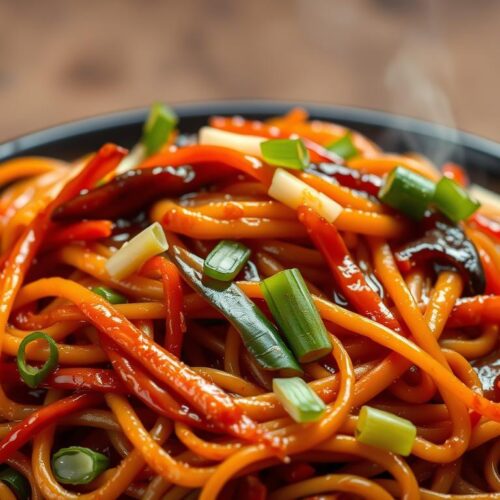
Soy Sauce Noodles (Easy And Quick Fried Noodles)
Ingredients
- 8 oz ramen egg noodles, or lo mein noodles
- 2 tablespoons soy sauce
- 1 tablespoon dark soy sauce optional for deeper color/flavor
- 1 teaspoon sesame oil
- 1 tablespoon vegetable oil
- 2 cloves garlic minced
- 2 green onions chopped
- ½ teaspoon sugar
- Optional: chili flakes bean sprouts, or sliced bell peppers for extra flavor or texture
Instructions
- Cook noodles according to package instructions. Drain and set aside.
- In a bowl, mix soy sauce, dark soy sauce (if using), sesame oil, and sugar.
- Heat vegetable oil in a large pan or wok over medium heat.
- Add minced garlic and sauté for 30 seconds until fragrant.
- Add cooked noodles and pour in the sauce mixture.
- Stir-fry for 2–3 minutes, tossing well to coat.
- Add chopped green onions and optional chili flakes. Stir to combine.
- Serve hot, optionally garnished with more green onions or sesame seeds.
